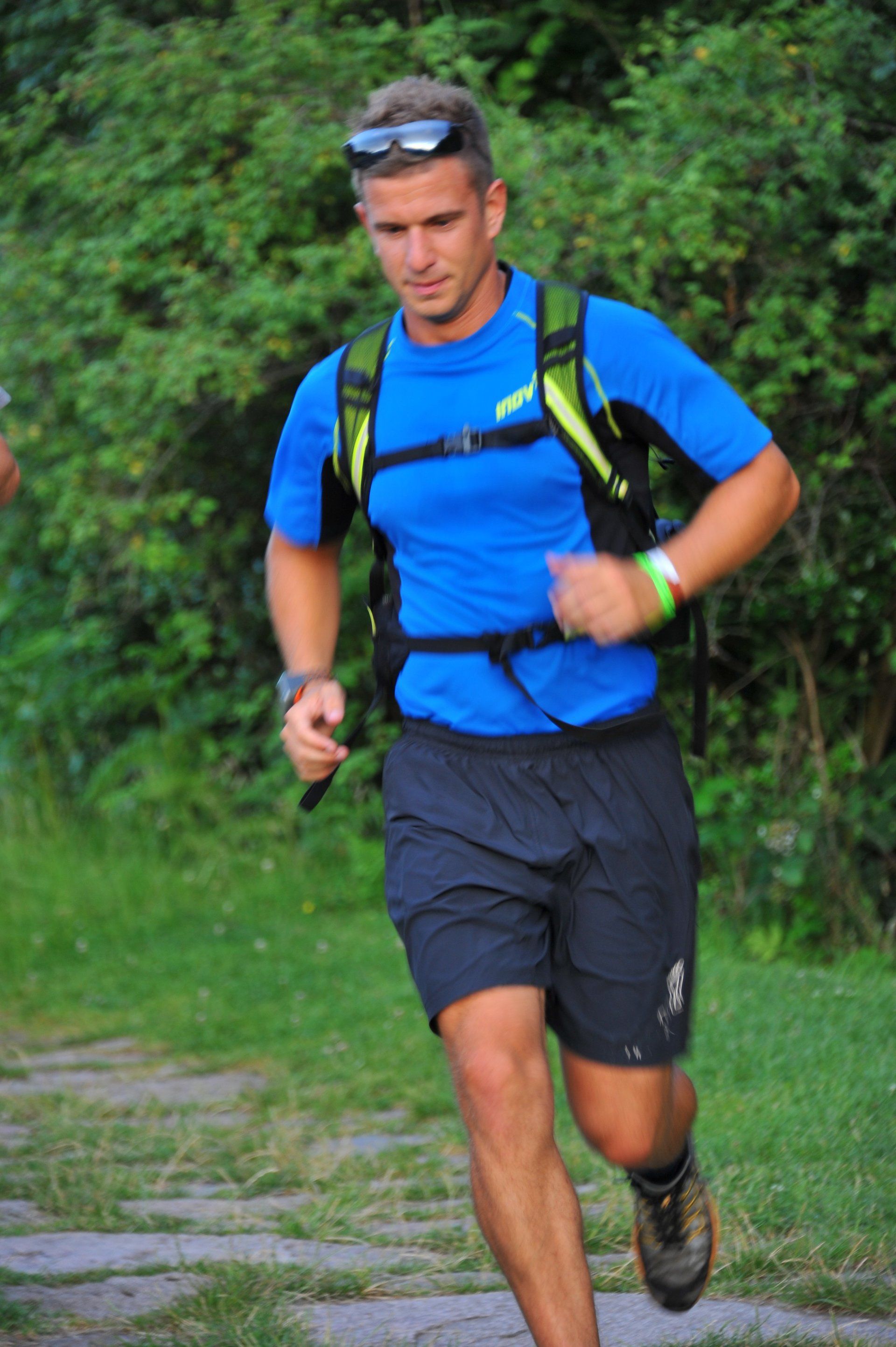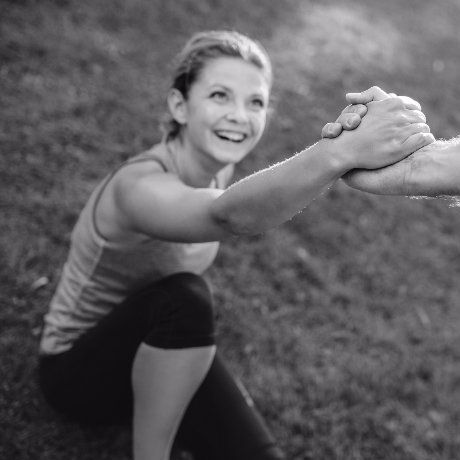tom's BLOG

Running the Lake District 100
The Lake District 100 was the hardest thing I have ever done, and I’m still absorbing it 72 hours after finishing. The experience was so intense, it’s the rest of life that feels a bit unreal at the moment.
The race started from Coniston at 6pm on Friday 26th July; 274 runners set off, only 124 would finish. The route of the Lakeland 100 is tough. It doesn’t climb a single mountain, but it’s basically 100 miles (actually 105 miles) of almost continuous ascent and descent in a great big circle round the Lake District, from Coniston to Wasdale, Buttermere, Braithwaite, Ullswater, Haweswater, Sleddale, Kentmere, Ambleside, Langdale and back over the fells to Coniston. The cut off time for completing the round was 40 hours.
At the beginning I focused on keeping a steady pace, running easily, ignoring the early crowds of runners passing and re-passing each other. As darkness fell the crowds thinned out. High up on Kirk Fell I looked back, and saw a snake of bobbing head torches, miles long, trailing all the way back to Wasdale Head and beyond. The night was hot, so hot I didn’t even put an extra layer on. I reached the Buttermere checkpoint at twenty minutes past midnight, and saw dawn and the checkpoint at the Blencathra Centre by half past four in the morning. A hot night turned into a hot day. The next section, over Threlkeld Common, was hard. It’s hard when you do it as part of the Bob Graham Round, and it was hard today. The miles were long over Matterdale Common, around Ullswater, through the checkpoint at Howtown on the shores of Ullswater, which I reached at 11.25, then on over the empty eastern fells to Haweswater. The path along the western shore of Haweswater to the checkpoint at Mardale Head went on for ever. I was over half way now, but running through the hottest part of the day, there was no breeze, and I felt every step of it. Runners from the 50 mile even, which had started from D at midday began to come past. They looked so fast and so fit, but every single one of them had a word of encouragement as they came by. Our names were on our race numbers. “Come on, Tom,” they said. “Good on you, mate.” By the time I reached the checkpoint I had been running for over 20 hours. I had been wondering what it would be like to run without stopping and without sleeping for more than 24 hours. Now I was about to find out.
It was beyond hard. From Mardale Head to Kentmere Village Hall took over two and a half hours of relentless climbing and descending, and by the time I reached Kentmere at twenty to six, I had had enough. I just wanted to stop. I sat down in the checkpoint exhausted, sick, in pain. I had nothing left. Nothing. I hardly knew who I was or where I was. I have never experienced anything like it before. My body was shutting down. The longer I sat there, wanting to throw up in the heat, the worse it got. I stood up. Stopping was worse than carrying on. I walked to the door, went outside, set off on the next leg to Ambleside. It was agony. And then it wasn’t agony. I powered my way up the fells out of Kentmere. My legs were strong, light, flexible. I ran. I passed other runners. I even passed runners in the 50 mile run. It was incredible, and it stayed like that six hours, all the way through Ambleside, and on into Langdale, where I reached the checkpoint at 9.46pm. I had been running for 27 hours and 45 minutes.
Darkness fell on my second night of running. It started to rain. Then I hit the wall again. It took me two hours and 36 minutes of agony and effort to cover the six and a half miles to the final checkpoint at Tilberthwaite, and then an hour and 44 minutes from Tilberthwaite to Coniston. I knew I would finish the race, but these last two legs were beyond everything. The rain sluiced down. It was freezing cold, so cold that my teeth were actually chattering. The ground was sopping wet, slippery and stony. I could barely make my brain function enough to work out the route. My left knee burned at every step. My feet hurt beyond describing. My back hurt. I saw weird shapes flickering in the beam of my torch. I thought I saw a sheep lying on its back and flapping its feet in the air. I knew it wasn’t really there, but I still thought I saw it. I took the wrong track into Coniston. I lurched through Coniston. And I ran over the finishing line. It was 2am. I had run 105 miles, and it had taken me 32 hours, 5 minutes, and 5 seconds.
Coniston School hall was a blaze of light and full of people. Someone hung my finisher’s medal around my neck, and they all cheered deafeningly. “Tom Lininsh! Lakeland 100 finisher!” It was surreal. I sat down, and stared at my feet for a long time. Then I went outside, back into the pouring rain, and spent half an hour looking for my car and tent on the combined campsite and car park on the school playing fields. When I found them, the tent had been flooded. I crawled into the back of the car, screwed up my waterproof trousers into a pillow, and went to sleep. When I woke up, I drove home, reaching Skirpenbeck before the final runners had crossed the finishing line in Coniston.
The whole even was brilliantly organised. The checkpoints were superb, with food and water and gels available, so that you didn’t need to carry much with you. I ate pasta at one checkpoint, and had a plate of stew at another. Everyone was friendly, especially the other runners, and everyone supported each other and encouraged each other all the way round. People encouraged me, and helped to keep me going. In that long, dark rain filled final stage I gave my last gel and my water to another runner, and made sure he didn’t give in. As I said at the start, I’m still absorbing the experience. Physically and mentally it was the toughest thing I’ve ever done. I have a feeling, though, that it won’t be too long before I start to think about the Lakeland 100 in July 2014.

The rehab process
The first step in the rehab process is to carry out a full bio-mechanical assessment.
We will assess how efficiently your body moves and to identify the underlying problems that have led to your injury.
We will analyse factors such as:
• Body posture
• Breathing
• Stress
• Footwear and the stress that the wrong footwear can add to an injury
• Nutrition
Your Rehab programme
Based on all the above, we will put in place a full rehab programme to overcome your injury now and keep you injury free in the future. As in all my practice, nutrition is an essential component of successful injury rehab. We will identify the right nutrition for your particular injury. To arrange a rehab consultation, click here In the meantime, here are some tips to help you assess your own injury.
Tips if you are injured
Listen to your body. Your body will tell you what is enough and what is too much. The key to rehabilitation is to tune in to your body and accurately interpret the message it is giving you.
Pain during activity is not necessarily bad. Often it is stiff tissue that needs activity and gets better with it. Feel out the trends. If it starts painful then gradually improves, you’re in the clear. The same load tomorrow will likely feel better. Pain after activity is also okay – as long as it goes away. Any pain that dissipates within an hour or two of that activity is an appropriate, affordable load.
Pain for the rest of the day and into the next one is a definite overdraft. While it doesn’t necessarily mean you’ve re-injured yourself, you have definitely overdone it and will have to be more restful the next day to overcome the cost.
The most challenging situation is when one is pain free during an activity, then is very painful several hours later. This delayed-onset pain also represents an overdraft. Lesson: even though it feels good while you’re doing it, know the true cost of your activity!
Finally, find a skilled sports-medicine professional with know-how and experience in injury rehabilitation. By properly evaluating and diagnosing your injury they will gauge both your tissue ability and loading progression, and advise an appropriate way forward in line with clinical and research-based guidelines.